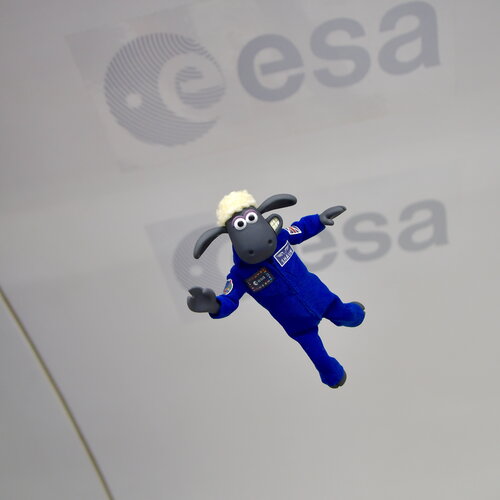
Copernical Team
Northrop Grumman to lead Homeland Missile Defense Program for MDA
 Northrop Grumman Corporation (NYSE: NOC) has been awarded an indefinite delivery, indefinite quantity contract with a maximum amount of $3,286,745,005 by the Missile Defense Agency (MDA) for the Ground-based Midcourse Defense (GMD) Weapon System (GWS) program.
The GWS program defends the United States against intermediate and intercontinental ballistic missile attacks. Under this competiti
Northrop Grumman Corporation (NYSE: NOC) has been awarded an indefinite delivery, indefinite quantity contract with a maximum amount of $3,286,745,005 by the Missile Defense Agency (MDA) for the Ground-based Midcourse Defense (GMD) Weapon System (GWS) program.
The GWS program defends the United States against intermediate and intercontinental ballistic missile attacks. Under this competiti Super-earth skimming habitable zone of red dwarf
 A super-Earth planet has been found near the habitable zone of a red dwarf star only 37 light-years from the Earth. This is the first discovery by a new instrument on the Subaru Telescope and offers a chance to investigate the possibility of life on planets around nearby stars. With such a successful first result, we can expect that the Subaru Telescope will discover more, potentially even bette
A super-Earth planet has been found near the habitable zone of a red dwarf star only 37 light-years from the Earth. This is the first discovery by a new instrument on the Subaru Telescope and offers a chance to investigate the possibility of life on planets around nearby stars. With such a successful first result, we can expect that the Subaru Telescope will discover more, potentially even bette Unveiling the distribution of dark matter around galaxies 12B years
 A collaboration led by scientists at Nagoya University in Japan has investigated the nature of dark matter surrounding galaxies seen as they were 12 billion years ago, billions of years further back in time than ever before. Their findings, published in Physical Review Letters, offer the tantalizing possibility that the fundamental rules of cosmology may differ when examining the early history o
A collaboration led by scientists at Nagoya University in Japan has investigated the nature of dark matter surrounding galaxies seen as they were 12 billion years ago, billions of years further back in time than ever before. Their findings, published in Physical Review Letters, offer the tantalizing possibility that the fundamental rules of cosmology may differ when examining the early history o Webb captures stellar gymnastics in the Cartwheel Galaxy

The Cartwheel Galaxy, a rare ring galaxy once shrouded in dust and mystery, has been unveiled by the imaging capabilities of the NASA/ESA/CSA James Webb Space Telescope. The galaxy, which formed as a result of a collision between a large spiral galaxy and another smaller galaxy, not only retained a lot of its spiral character, but has also experienced massive changes throughout its structure. Webb’s high-precision instruments resolved individual stars and star-forming regions within the Cartwheel, and revealed the behaviour of the black hole within its galactic centre. These new details provide a renewed understanding of a
ESA names first ‘astronaut’ to fly on the Artemis I lunar mission

The specially trained woolly astronaut, Shaun the Sheep, has been assigned a seat on the Artemis I mission to the Moon. Shaun’s assignment was announced by ESA’s Director for Human and Robotic Exploration Dr David Parker.
100% bio-sourced thermoset composites tested for space

Combining high strength with low weight, corrosion-resistant and shapeable into almost any form, composite materials are a key ingredient of modern life: employed everywhere from aviation to civil engineering, sports equipment to dentistry – and also a vital element of space missions. But they have some less desirable aspects: produced from petroleum products, they are non-renewable in nature and also non-recyclable. So ESA is working with Côte D’Azur University on a new breed of space-quality composites made from wholly sustainable sources.
Proposal by research team could revolutionize space medicine, improve astronaut health

Often when researching the molecular and biological changes that happen in space, models such as rodents, worms, and yeast are used to study the effects and consequences of long-duration space flight as a way to understand how microgravity impacts humans in space. However, OHIO's Nate Szewczyk, Ph.D., and several other researchers from around the world have published a paper that proposes a program for the European Space Agency that could potentially revolutionize space medicine by routinely collecting biological samples from astronauts for use with cutting-edge technologies to understand the effects on their genes, mRNA, proteins, and metabolites (commonly referred to as "omics" technologies).
The paper, titled "Routine omics collection is a golden opportunity for European human research in space and analog environments," published in the journal Patterns, details how omics profiling is primed to transform space medicine and improve occupational healthcare for astronauts. The paper's authors anticipate that omics profiling will improve astronauts' health and mitigate spaceflight risks, which could increase mission success on more ambitious endeavors such as voyages to Mars. The group of researchers go on to highlight in the paper the collaborative steps that should be taken to design a standardized data resource that can be used for years to come as data and science evolves.
China launches two more remote sensing satellites into orbit
 China used a Long March 2D carrier rocket to launch several remote-sensing satellites on Friday night, according to China Aerospace Science and Technology Corp, the country's leading space contractor.
The rocket blasted off at 9:28 pm at the Xichang Satellite Launch Center in Sichuan province and soon placed the Yaogan 35-02 satellites, the third group of spacecrafts in the Yaogan 35 remot
China used a Long March 2D carrier rocket to launch several remote-sensing satellites on Friday night, according to China Aerospace Science and Technology Corp, the country's leading space contractor.
The rocket blasted off at 9:28 pm at the Xichang Satellite Launch Center in Sichuan province and soon placed the Yaogan 35-02 satellites, the third group of spacecrafts in the Yaogan 35 remot Balloon fleet senses earthquakes from the stratosphere
 A new study in AGU's Geophysical Research Letters reports on the first detection of a large, distant earthquake in a network of balloon-bound pressure sensors in the stratosphere. The technique could one day be applied on Venus, whose hot, dense and corrosive atmosphere limits our ability to sense Venus-quakes from the planet's surface. The balloons could also be used on Earth in hard-to-reach p
A new study in AGU's Geophysical Research Letters reports on the first detection of a large, distant earthquake in a network of balloon-bound pressure sensors in the stratosphere. The technique could one day be applied on Venus, whose hot, dense and corrosive atmosphere limits our ability to sense Venus-quakes from the planet's surface. The balloons could also be used on Earth in hard-to-reach p Space travel: Bone aging in fast forward
 Long periods in space damage bone structure irreparably in some cases and can make parts of the human skeleton age prematurely by up to 10 years. This is what a sport scientist at University of Erlangen-Nuremberg (FAU) has now discovered in conjunction with other researchers from Germany, Canada and the USA.
Adapted training programs in conjunction with medication could provide better prot
Long periods in space damage bone structure irreparably in some cases and can make parts of the human skeleton age prematurely by up to 10 years. This is what a sport scientist at University of Erlangen-Nuremberg (FAU) has now discovered in conjunction with other researchers from Germany, Canada and the USA.
Adapted training programs in conjunction with medication could provide better prot 